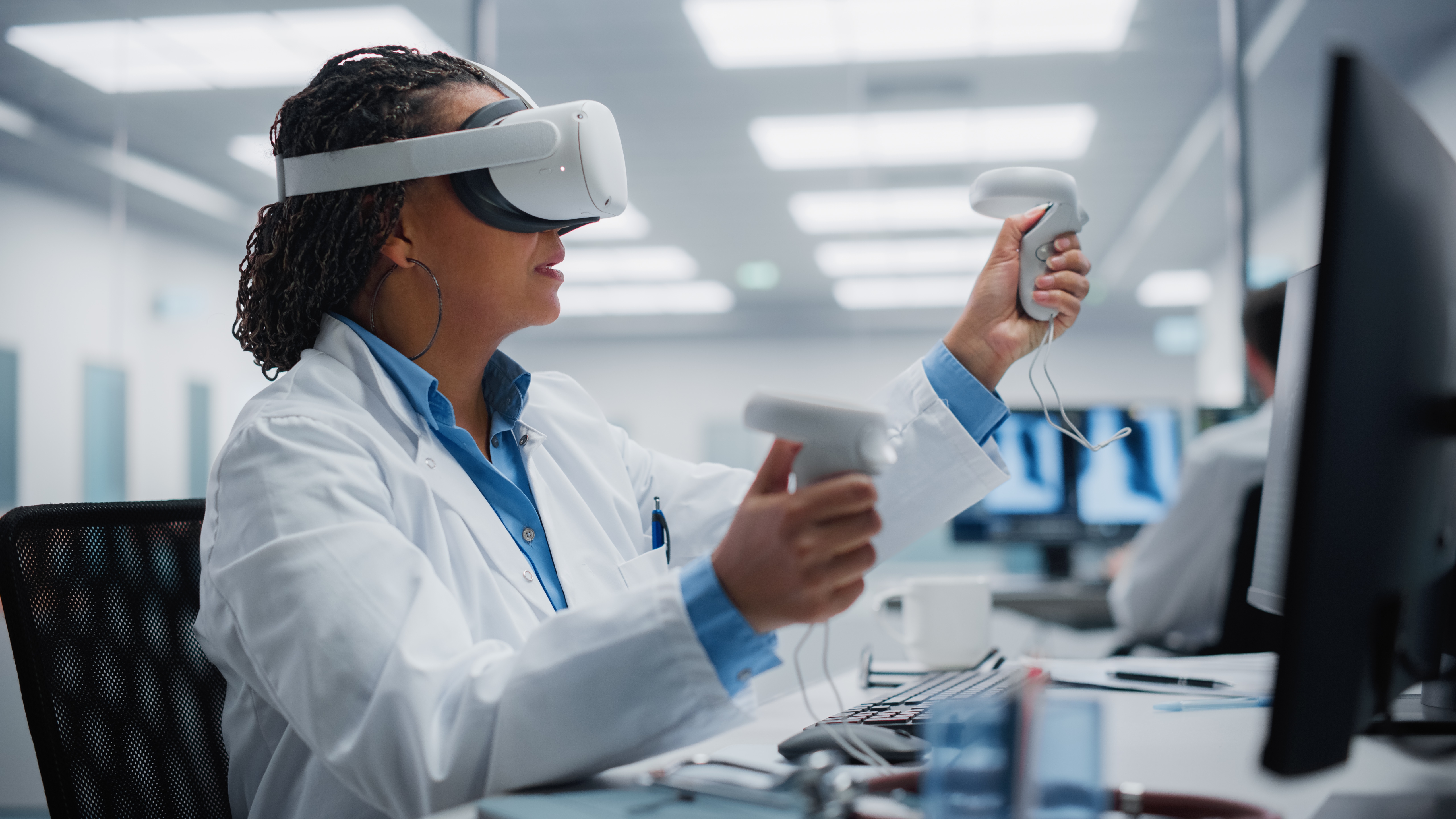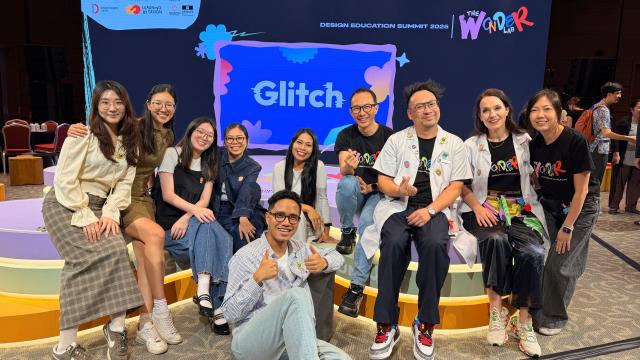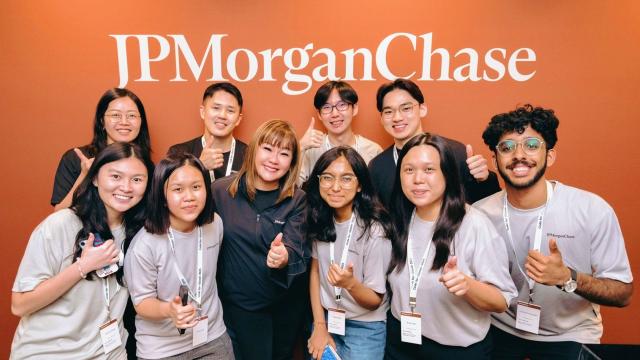Associate Professor Tan Bhing Leet looks at how Augmented Reality and Virtual Reality technology can help adults with intellectual disabilities and autism practise life skills in a safe, virtual setting.
The soft whirring of coffee machines fills the air, enveloping the minimalist interior of a boutique cafe. The cafe staff gently gathers empty cups and plates from the tables, carefully bringing them back into the kitchen. Just then, a customer enters the cafe and greets him. In return, the staff member smiles at her warmly.
Though familiar, this scene is not happening in reality — it is happening in virtual reality (VR) instead. More specifically, it is a simulation of a cafe, one of many settings that are used to rehabilitate individuals with neurodevelopmental disorders through gamified experiences that help them build important life skills.
In 2020, Associate Professor Tan Bhing Leet and her team from the Singapore Institute of Technology (SIT) conducted a study, where 15 adults with an intellectual disability or autism participated in a gamified augmented reality (AR) cafe training scenario.
The study found that such AR and VR training programmes were beneficial for the participants and their trainers alike. At the end of the study, all 15 participants showed an improvement in their vocational skills and cognitive skills, which were maintained for eight weeks after the training concluded.

For adults with neurodevelopmental disorders, preliminary findings reveal a positive impact of AR and VR on their functional performance. (Photo: Shutterstock)
Fuelled by a desire to learn and contribute more to this area, A/Prof Tan embarked on a systematic review of AR and VR in the psychosocial rehabilitation for adults with neurodevelopmental disorders, researching studies in the field spanning a decade. She focused on reviewing rehabilitation programme technology, features and acceptability, seeing how effective these AR/VR programmes are.

Principal Investigator A/Prof Tan Bhing Leet conducted a systematic review of AR and VR in the psychosocial rehabilitation for adults with neurodevelopmental disorders. (SIT Photo)
Game On
Having prior experience in mental health research, especially in the use of gamified platforms since the early 2000s, A/Prof Tan and her co-authors were unfazed by the daunting task of having to sieve through a total of 1,267 related journal articles.
“The team and I conducted the review using a set of international guidelines called the Preferred Reporting Items for Systematic Reviews and Meta-Analysis (PRISMA),” she said. “We ploughed through the studies for a few months before determining that 38 studies met the criteria for the review.”
However, there was an even bigger challenge. Since the studies were sourced from the past decade, technologies and terminologies had changed, which meant that A/Prof Tan and her team had to do extra fact-checking. But the effort paid off when the team eventually uncovered positive qualitative findings.
“A majority of the studies on adults with neurodevelopmental disorders showed improvements in the participants’ skill sets. These include job interview skills, the ability to navigate within the community, social interaction skills and household management skills, among others,” A/Prof Tan explained.
Many of these interventions also targeted skills training or strategy learning in community living, work and social participation, like taking public transport and shopping. In addition, most of the users also found it acceptable to use headsets, VR goggles, or mobile applications as part of their daily lives.
These findings, which were reported in 28 international news outlets, show the potential for more clinicians and rehabilitation practitioners to carry out AR and VR rehabilitation programmes.
“Although AR and VR cannot replace real social engagement, it can be a useful complementary tool,” she added. “One way to ensure that participants benefit from AR and VR is to gradually increase the difficulty levels of the training programmes through games and provide them with just the right amount of challenge. This will ensure that they learn to be as independent as possible in a safe, fun and engaging environment.”
A Human Touch
However, even though these programmes prove useful in helping to rehabilitate adults with neurodevelopmental disorders, rehabilitation practitioners need to be trained to harness the technology appropriately to achieve therapeutic goals with their clients.
For instance, rehabilitation practitioners will not just be getting their clients to play the game, but to teach them strategies to overcome task challenges as a result of their cognitive difficulties. The practitioners will also need to use different methods, such as verbal prompts and questions, to help clients acquire skills and gain expertise in their lives, in addition to the gamified learning experience.
Thus, clients need to be coached professionally. Resources also come into play, as it may be challenging for some organisations to provide enough headsets or AR/VR equipment.
This is why A/Prof Tan is not done yet. She hopes to conduct further research, and this time focusing on the implementation and sustainability of AR/VR programmes in rehabilitation across various mental health settings.
“One breakthrough that I would like to see is how we can use both technology and humans to enhance the mental well-being of the community,” she said. “To do so, we will need to build an ecosystem to strengthen service provision beyond hospitals to the community, to improve the quality of life of mental health patients and adults with intellectual disabilities. This will be a huge undertaking.”
“I also hope to collaborate with like-minded clinicians and researchers in this field of research to create an impact.”
For collaboration on this research, get in touch with A/Prof Tan here.















![[FA] SIT One SITizen Alumni Initiative_Web banner_1244px x 688px.jpg](/sites/default/files/2024-12/%5BFA%5D%20%20SIT%20One%20SITizen%20Alumni%20Initiative_Web%20banner_1244px%20x%20688px.jpg)


